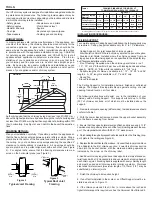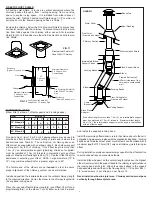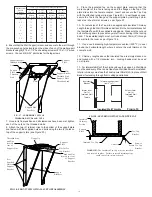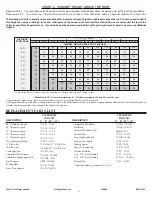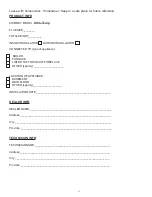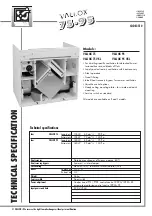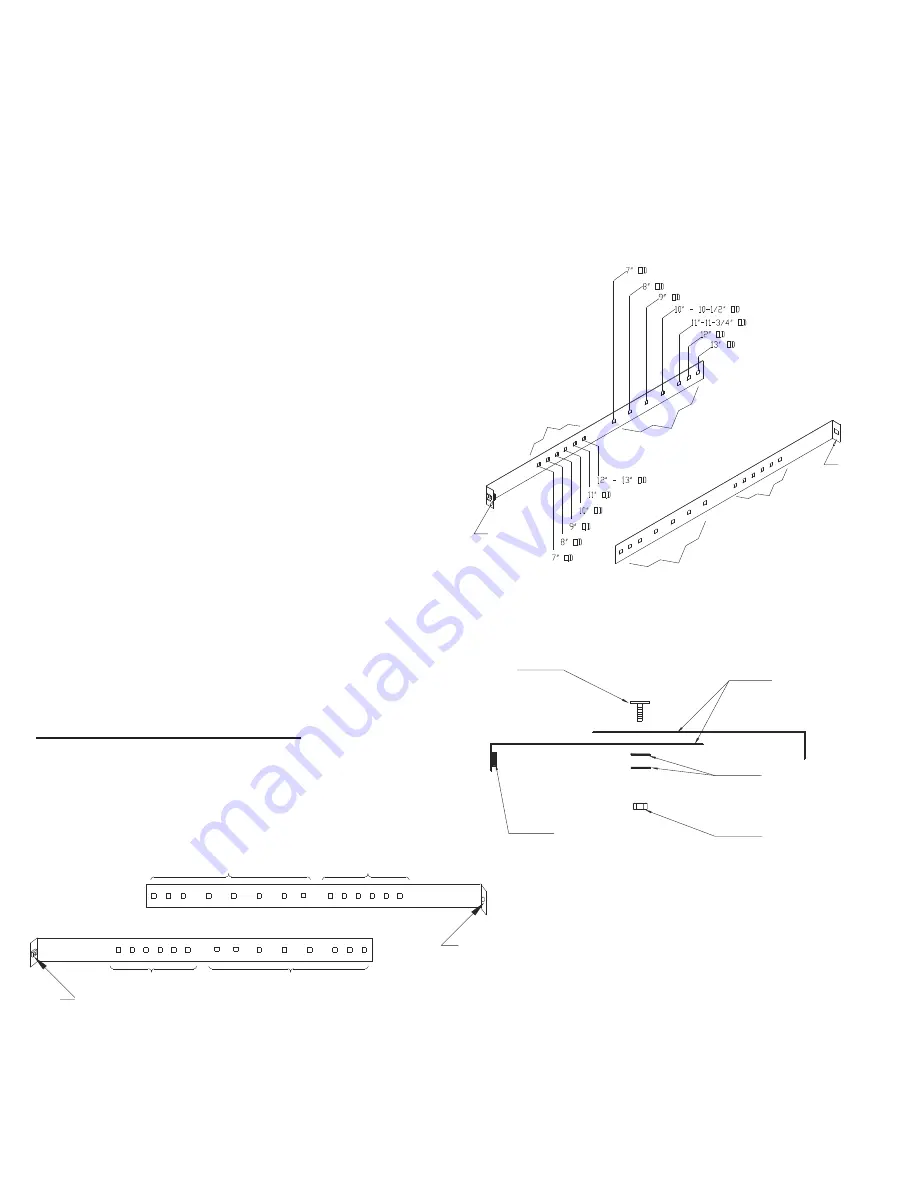
13
HEAVY DUTY UNIVERSAL ROOF BRACE KIT
The Chimney, Flashing and Storm Collar may be painted with a heat
resistant rust proofing paint when enclosing of the chimney is not
possible or if exposed to wind driven ocean spray. Salty humid air
causes metal to corrode faster than air with normal humidity. This will
extend its life and improve the appearance and could be matched with
the roof shingles. To improve adhesion to the chimney, degrease,
clean and prime before painting. Follow the paint manufacturer’s in-
structions.
Continue adding chimney lengths until the proper height is achieved (see
Figure 1 and Chart 2). Install a Round Top. The Round Top prevents entry
of moisture which might lead to premature deterioration of the chimney.
A Rubber Boot Flashing Kit
is available as an option for passing
through a corrugated or metal roof. See separate instructions pack-
aged with the Rubber Boot Flashing Kit. On metal or steep roofs, it is
recommended that an ice deflector or “cricket” fabricated from heavy-
guage galvanized steel be installed. The wedge-shaped deflector is
installed 2” from the chimney on the upper slope. Its function is to
split ice and snow as they slide down the roof, preventing damage to
the chimney.
Slide the top edge (nearest the roof peak) of the flashing under the
roofing shingles. At least half of the flashing (top and sides) should
be UNDER the shingles and the lower end OVER the shingles to
provide a watershed. Trimming off the shingles may be neccessary
around the cone of the flashing for a better fit. On existing roof appli-
cation, lower a chimney length into the flashing opening and twist
lock in place and secure with a Locking Band. Ensure that the chim-
ney is level and plumb before nailing the flashing to the roof.
Nail the flashing to the roof deck (also under the shingles) along the up-
per edge and down each sides with 12 nails with neoprene washers or
cover the heads with a suitable non hardening waterproof caulking. Seal
the shingles to the plate in the same manner. As a precaution, apply a
bead of caulking along all seams of the flashing as per Figure 28.
Apply a non-hardening high temperature silicone caulking just above the
top of the flashing cone where it meets the chimney casing. Slide the
Storm Collar through the applied caulking and place into its final position
to ensure a waterproof joint. Apply additional caulking above the Storm
Collar as required.
The HDURBK will provide lateral support to the chimney above the roof
line. The HDURBK is required when the chimney extends 5 feet (1600mm)
or more above the roof penetration. The kit contains Telescoping Legs,
Support Band, Roof Angle Brackets and hardware package.
Holes used to assemble Support
Band
Holes used to attach
Telescoping Legs to
Support Band
Support Band Holes Identifier
Holes used to assemble Support
Band
Holes used to attach
Telescoping Legs to
Support Band
Cage
Nut
Tab for
2” Bolt
Figure 29
The HDURBK accommodates most models of chimneys with outer
diameters ranging from 7" through 13". For larger diameter a suitable
Bracing System would need to be constructed (guy wires).
NOTE:
Different holes combination can be selected as required.
To Install:
A. Measure the
outside
(OD) diameter of your chimney.
B. From the row of holes (see Figures 29 and 30), select the hole in
each half that corresponds to the outside diameter identified with
the chimney being installed. Place the two halves together. Insert
an elevator bolt through the chosen holes (Ex - for a 10” OD
chimney, place the elevator bolt through the holes identified for 10”
OD). The elevator bolt should be oriented as shown in Figure 31.
Secure the center bolt with washers and 1/4” flanged nut (see
Figure 31). NOTE: On smaller diameter chimneys the excess
band material can be cut off.
Cage Nut
Assembly of
Universal
Support Band (2
Halves)
Tab For
2” Bolt
Holes for T
elescoping Legs
to Support Band
Holes for Support Band
Holes for Support Band
Holes for T
elescoping Legs
to Support Band
Figure 30
Topview assembly of Support
Band - Elevator Bolt, Washers
and Nut
Hex Nut
Flat Washers
Support Band
Halves
Elevator
Bolt
Cage Nut
Figure 31
C. Form the band into a circle (see Figure 32) and loosely connect
tabs using the supplied 2” bolt into the cage nut located on one
of the two formed tabs.
D. Select the hole in each half that corresponds to the OD of the
chimney. Insert an elevator bolt in each of the holes (1 per side).
Summary of Contents for ULTRA-TEMP UT
Page 3: ...3 CERTIFICATIONLABELS ...





